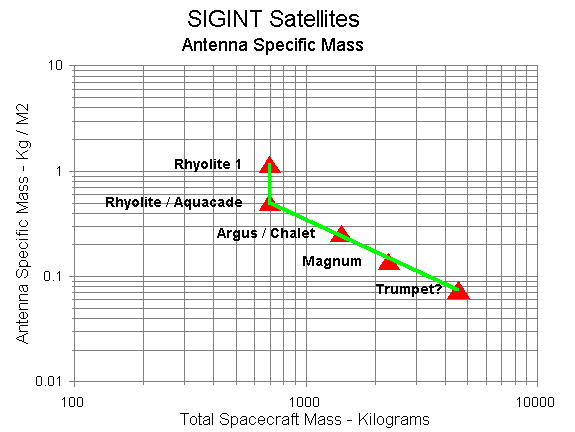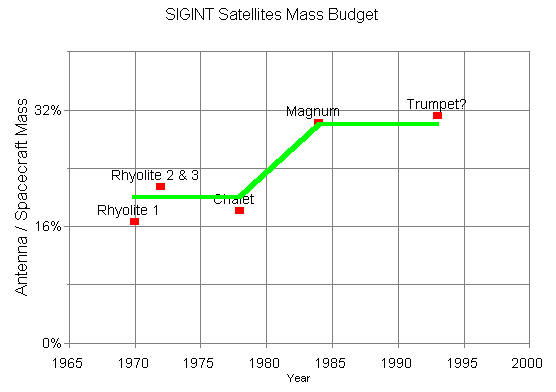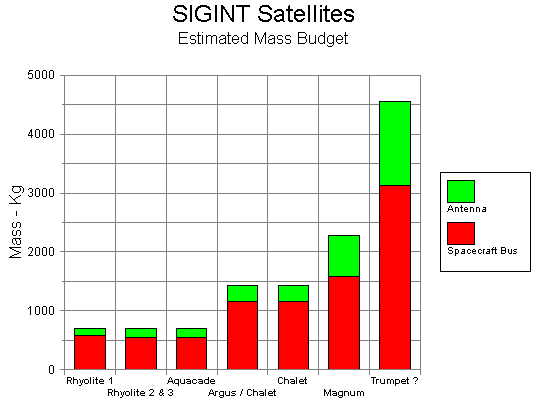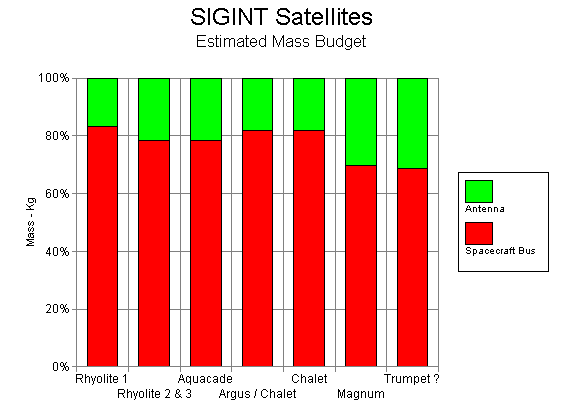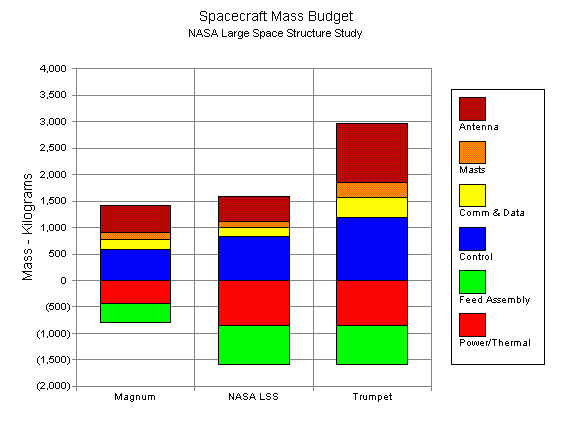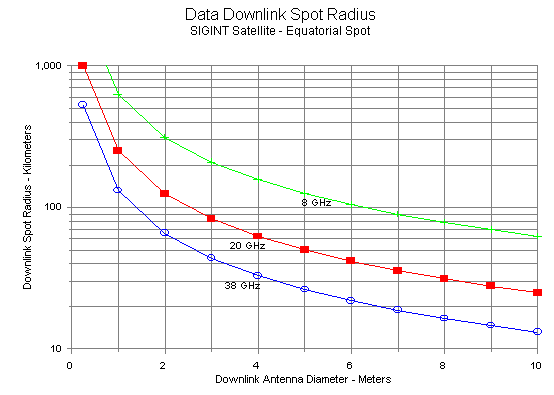




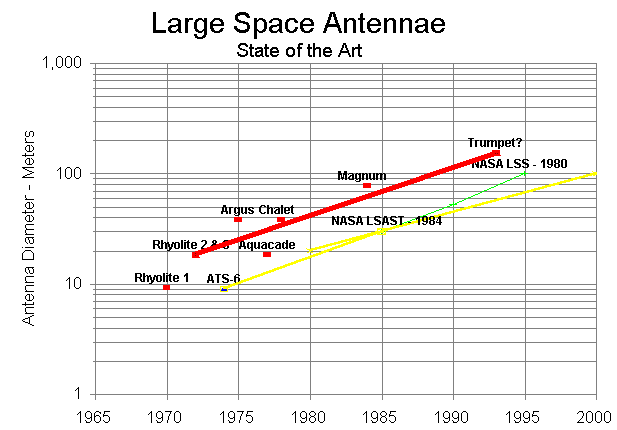

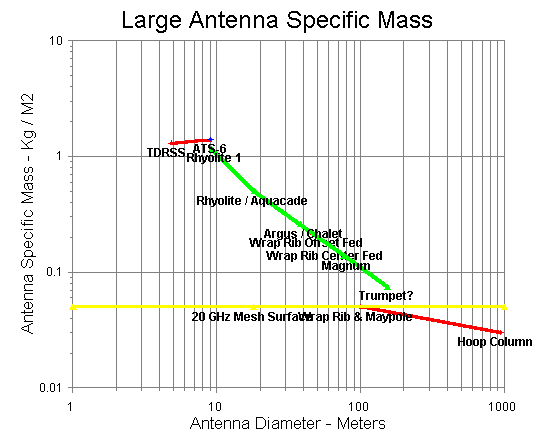
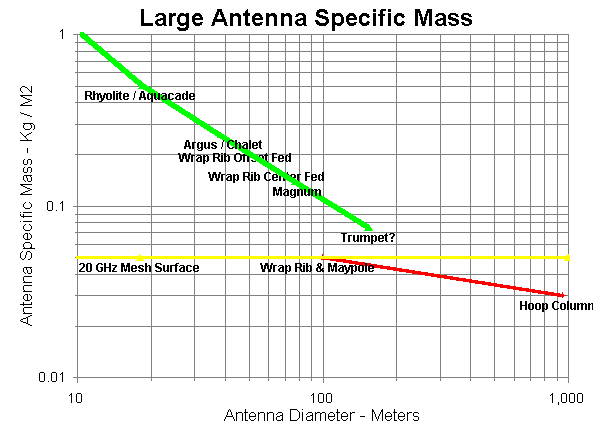
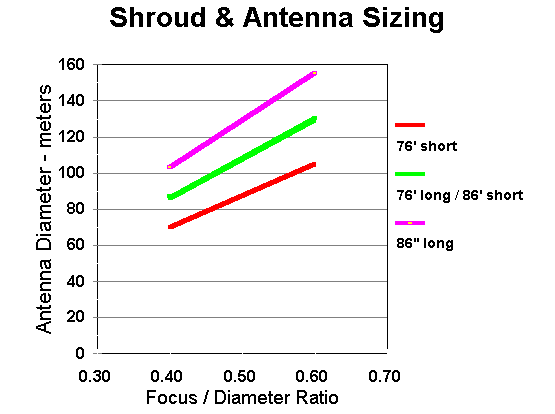
The Hughes antenna design offers an opportunity to deduce total antenna diameter, based on shroud constraints on the maximum length of the vertical support struts. Unfortunately, the range of possible parameters is too great to do more than generally constrain plausible upper and lower limits on antenna diameter.
Two cases are considered, the 76-foot and 86-foot length Titan-4 Centaur payload shrouds. The maximum strut length in each case may be taken to be somewhere between the length that extends from the top of the Centaur upper stage to the base of the cone of the shroud [the short length] and the length that extends in a direct line from around the outer diameter of the Centaur into the shroud cone [the long length].
These dimensions are:
Shroud short long 76' 35.4' 44.2' 86' 43.7' 52.5'These dimensions bound the depth of the antenna dish
The depth (d) and Diameter (D) of the parabolic reflector antenna are related to the focal length (f) is a function of
(Diameter)exp2
f = -----------
16*(depth)
Parabolic reflectors with a focal length (f) to Diameter (D) ratio (f/D) between 0.4 to 0.6 represent typical compromises between maximum gain, feed simplicity and efficiency. Toward the lower values, e.g., 0.25, the feed point gets closer to the parabolic vertex which requires a feed -10dB beamwidth approaching 180-degrees (which poses complex design and fabrication challenges) but the antenna will be very quiet due to low spillover and a cleaner pattern. Toward the high values, e.g., 0.75, the feed point moves further from the vertex requiring a more and more substantial feed support structure, though allowing simple feed designs.
Sources
